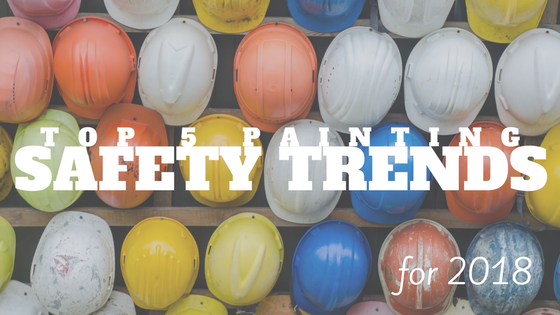
Industrial painting is a high-hazard industry sector that comprises a variety of small- and large-scale painting operations. During industrial paint jobs, painting contractors engage in many activities that often expose them to serious risks, such as falling from heights, occupational exposure to different substances that are hazardous to human health, being struck by heavy equipment, and electrocutions.
This blog post is designed to draw particular attention to the importance of the safety standards recently developed by OSHA and NIOSH in order to assist painting contractors in identifying, reducing, and eliminating the risks associated with industrial painting projects.
- Spray Painting
Nowadays, many industrial paint jobs involve spray painting operations. Although the benefits of industrial spray painting cannot be denied, there are several hazards that should be considered, ranging from substances that can be inhaled to chemicals that can be absorbed through the skin. To protect themselves from the potential health hazards associated with spray painting, industrial painting contractors should use:* Spray booths with proper ventilation systems that remove vapor, dust, and debris quickly, reducing workers’ exposure to hazardous substances;
* Personal Protection Equipment (PPE) that includes respirators, which must be selected based on the job being done, the chemicals being used, and the debris potentially resulting from scraping off old paint and sanding surfaces; protective clothing, like gloves and coveralls that prevent chemicals from coming into contact with the skin; safety goggles that provide protection against particles during sanding, grinding, and spray painting operations; and hearing protection that is typically necessary when working with air powered tools. - Painting in Enclosed and Confined Spaces
Industrial painters often perform painting tasks in enclosed or confined spaces, such as storage tanks and silos. Because there are different physical and atmospheric hazards in these spaces, it is recommended that all industrial painting contractors undergo specialized training in order to learn what safety procedures they need to implement and what equipment they must use when working in potentially dangerous areas.Additionally, new OSHA rules require employers to identify the potential hazards that may exist in enclosed areas and instruct workers to take the necessary precautions, so painting activities are completed safely, effectively, and with excellent results. Employers also need to develop a rescue plan which describes all the steps that should be taken if anything goes wrong.
With extensive experience in industrial painting projects, Performance Painting Contractors has the personnel, equipment, and infrastructure required to paint in confined environments. Furthermore, our painting crews are qualified and equipped to work under different conditions.
- Fall Prevention
Falls from heights are still the most common cause of workplace accidents. However, falls from scaffolds, ladders, and roofs can be easily prevented with the right equipment and safety measures.Before work commences, the site supervisor must accurately plan what activities will be involved, how each task will be performed, and what safety equipment will be required in order to get the job done safely. Every painter should also be trained in hazard recognition, and in setting up and using the equipment safely.
When performing high-rise paint jobs, for example, our industrial painting contractors always use the right kinds of scaffolds and ladders, adequate fall protection, PPE and safety gear like personal fall arrest systems (PFAS).
- Working on Roofs
In addition to identifying the hazards present and taking the necessary steps to address them, employers must ensure that appropriately trained industrial painters are available for roof painting projects. Furthermore, they must provide the right equipment for each phase of the project, according to OSHA’s 29 CFR 1926.501(b)(10) and (11), as well as other applicable standards. - Working under Special Conditions
To ensure safe working conditions, specialized equipment and containment methods are sometimes necessary. Projects that require specialized scaffolding, rigging, suspended access equipment, and containment include high-rise buildings, bridges, water towers, smokestacks and chimneys. Not only are our industrial painting contractors able to paint surfaces at any height; they also rigorously adhere to safety standards and requirements in order to ensure the successful completion of painting projects.
Performance Painting Contractors provides reliable high-rise painting services that are perfect for any type of new construction or restoration project. But more important than this, our number one priority is to keep our jobsite safe at all times.
Besides adhering to the current safety requirements, we regularly update our employees on the latest safety standards in order to ensure not only their safety but also the safety of our customers. To talk to one of our friendly and experienced professionals about your painting project, please call us today at (904)-641-4800 or (813)-308-0388!






